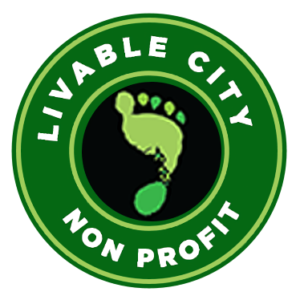2014 saw progress towards complete streets and a greenway network for San Francisco – and also showed that the city’s projects and practices are still falling far short of its standards, policies, and goals.
Vision Zero
Vision Zero – the goal of eliminating traffic deaths within a decade – made progress in 2014. Various city agencies adopted Vision Zero policies, and some adopted action plans to get to zero. In 2013 City’s Pedestrian Strategy identified the six percent of city streets where over half of pedestrian deaths and serious injuries occur, and the WalkFirst program, announced in March, aims to improve 170 priority intersections over the next five years. Many low-cost projects, including adjustments to traffic signal phases, higher-visibility crosswalks, intersection daylighting and a smaller number of corner bulbouts, got underway in 2014. However, the city has yet to commit to fully funding WalkFirst, and the Mayor delayed the vote on a proposed Vehicle License Fee increase with funding for Vision Zero until 2016. Fortunately the passage of Propositions A and B in the November 2014 election provide additional funding that can be used for pedestrian safety projects.
Complete Streets
Complete Streets are streets that successfully integrate walking, bicycling, and public transit into street design, and serve as green public spaces that support neighborhood livability. San Francisco’s Better Streets Policy calls for such a wholistic approach to street design, and our Complete Streets ordinance requires integration of walking, cycling, transit, and greening elements into major streets projects.
Notable Complete Streets projects in 2014 include Castro Street, which completed in October with wide sidewalks, street lighting and street trees, and public art. Low-cost improvements were made to Persia Triangle in the Excelsior, and a short stretch of Annie Alley downtown was converted into a pedestrian plaza.
SFMTA missed opportunities for a complete streets approach as it rolled out several transit-priority street projects as part of the Transit Effectiveness Project, and DPW proved unwilling to coordinate complete streets projects into its repaving and curb ramp programs. Passage of Proposition A in November will generate nearly a half-billion dollars for transit-priority projects, so lack of will, not lack of money, will remain the major impediment to Complete Streets going forward.
Livable City championed Planning Code amendments, approved at the end of 2014, to strengthen the streetscape improvements required of development projects.
A greener, more accessible waterfront
The second proposal to install a parking lot on the plaza behind the Ferry Building was abandoned early in 2014, and in June San Francisco voters passed a measure requiring a public vote to increase allowable building heights on the Port’s waterfront lands. Livable City participated in a waterfront open space task force that identified both new open space opportunities along the Embarcadero and improvements to existing open spaces. Planning began for a continuous bicycle path along the Embarcadero, along with complementary pedestrian improvements. A project to improve the Bay Trail by replacing parking with dedicated pedestrian and bicycle paths along the Marina Yacht Harbor advanced. Northeast Wharf Park, the second new waterfront park funded by San Francisco’s 2009 Parks Bond, opened next to the new Cruise Ship Terminal at Pier 27. Proposition F, a Pier 70 plan which included commitments to several acres of new waterfront open space as part of a mixed use project, was approved by voters in November.
On the City’s Western shoreline, the Ocean Beach Master Plan held workshops to identify near-term improvements that can be completed over the next few storm seasons.
Greenway Network
A citywide Greenway Network, first proposed by Livable City almost a decade ago, was embraced in the draft Recreation and Open Space Element (ROSE) of San Francisco’s General Plan. The ROSE was adopted by the Planning Commission in April, but the Board of Supervisors has yet to adopt it. The Green Connections Plan, completed in March 2014, identified walking or hiking routes criss-crossing the city, and the ROSE included a proposed Crosstown Greenway that includes the Greenway Network’s Glen Park-to-Golden Gate Park Greenway, and extends it north to the Presidio and southeast to McLaren Park.





